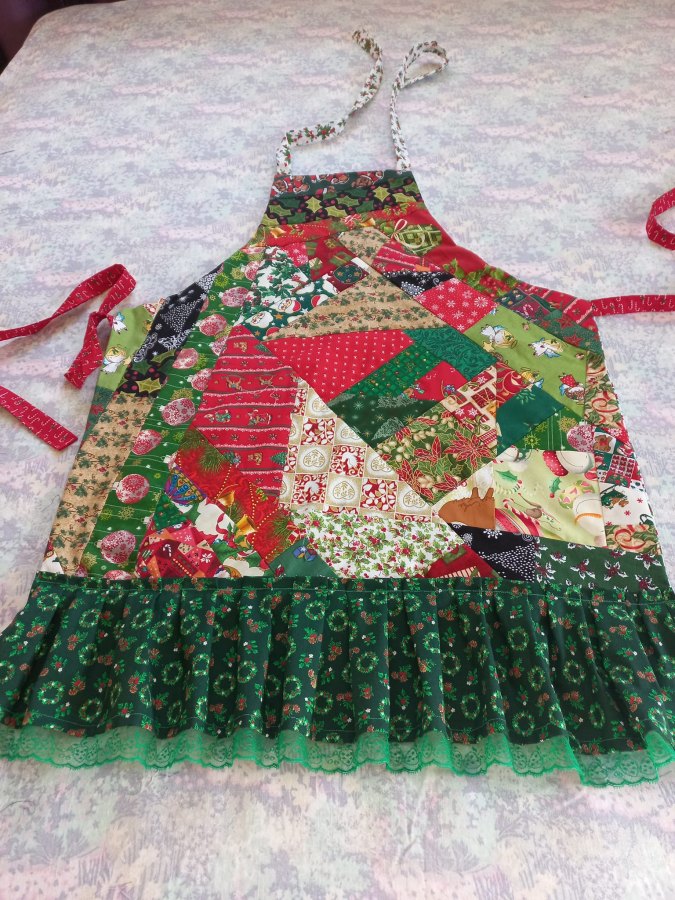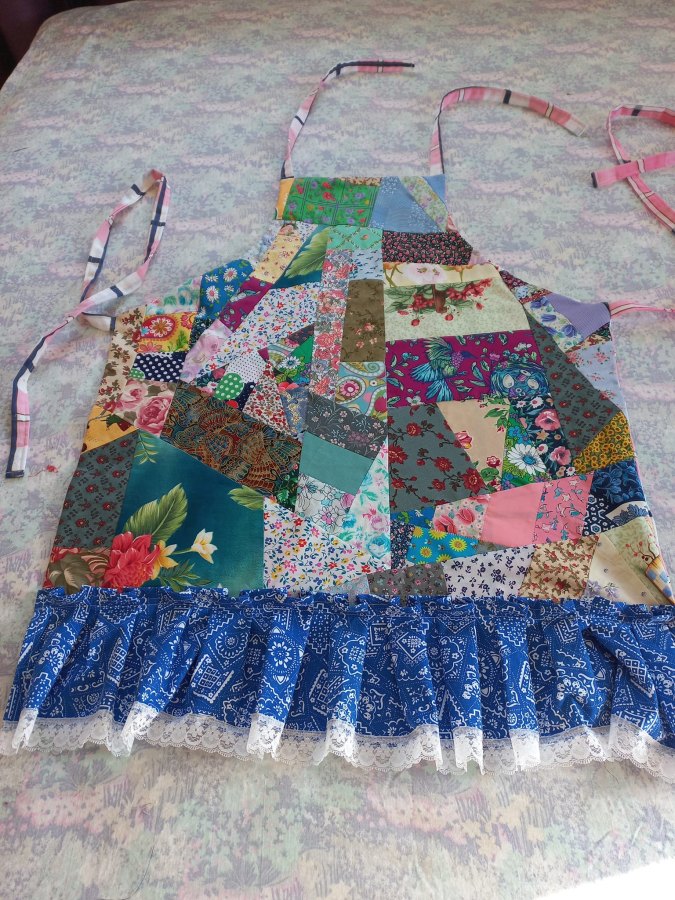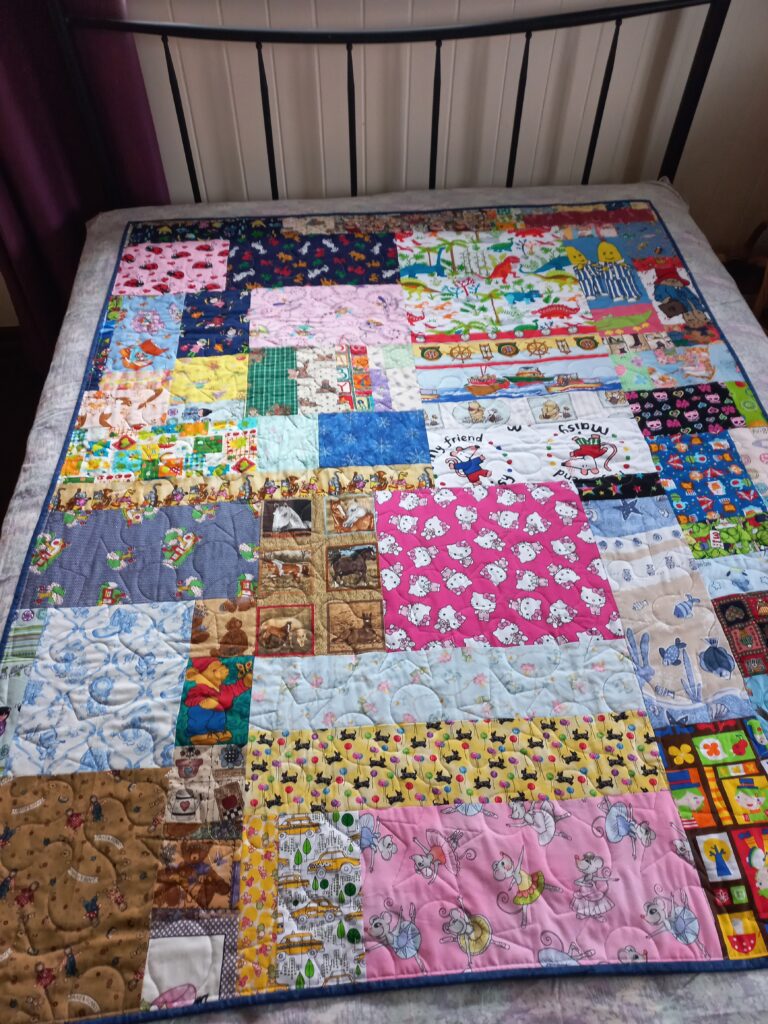Some experienced quilters may shudder to hear these patchwork methods being called ‘quilting’. Call it what you like, they are fun to do, and the end product looks terrific.
Crumb Quilting
I’m all about ‘no waste’, so bits and pieces left over from other projects are used in crumb quilting.
This is a method where all sorts and sizes of fabrics can be sewn together to create a colourful project.
I make aprons this way, often using poly cotton material because it’s light. I back the garment with a contrasting fabric from which I also make the ties, pocket and frill.


As long as you have a straight line on each of the two pieces of fabric, you can crumb quilt. It’s improvisational, fun to do and you never quite know what you are going to get!
You do not use wadding in crumb quilted aprons, (not needed and much too hot for the wearer) and I don’t long-arm stitch them either. I simply stitch in the ditches to ensure the lining and patched layer of the garment stay together in the wash.
Crazy Patch
You will almost always have leftovers from your quilted projects. Crazy Patch is another way to use those excess bits and pieces of cotton quilting fabric.
Like crumb quilting, odd patches are used, but rather than sewing them together, they’re stitched onto paper which is pre-cut to the desired size. When patches cover (and overlap) the paper, the fabric is trimmed, and the paper is torn away, leaving a multicoloured patch.
If you use paper, be sure to machine sew with a longer stitch, to facilitate easier removal of the paper when the patch is completed.
The traditional method is to stitch the patches onto paper. However, using fabric instead is a great way to use unwanted larger pieces. These may include fabrics with a dye fault, damage to the warp or weft or simply materials you don’t like.
If you use otherwise unwanted material, just as you do with the paper, cut each piece to the desired size and stitch a small patch in the middle, then work outwards by sewing each subsequent patch over the raw edge of the last.
Unlike with paper, the fabric backing is not removed. For me, it adds another layer of warmth to the quilt; it saves time because you don’t have to remove it and it uses up unwanted pieces of fabric instead of those lengths going to waste.
Because it’s not seen, any sturdy cotton fabric can be used. I’ve used winceyette with a dye fault. I’ve used uninspiring men’s shirt fabrics, calico or sheeting and I’ve used orange materials. (One of my least favourite colours.)
(An aside; winceyette is called flannelette in Australia.)
I like to make large crazy-patch blocks and sash them together, usually with plain fabric. Batik blenders are very good for this purpose.
It is worth noting here that if you piece-meal a back, you must ensure all edges overlap the front of the quilt by at least six inches. Movement can occur on the long-arm machine, so don’t make the mistake I did with my first quilt. I put sashing around the outer edges. The movement of the long-arm machine ensured I lost the sashing on one side.
Crazy patch and crumb quilting are particularly good patchwork methods to use for children’s ‘I Spy’ quilts.



